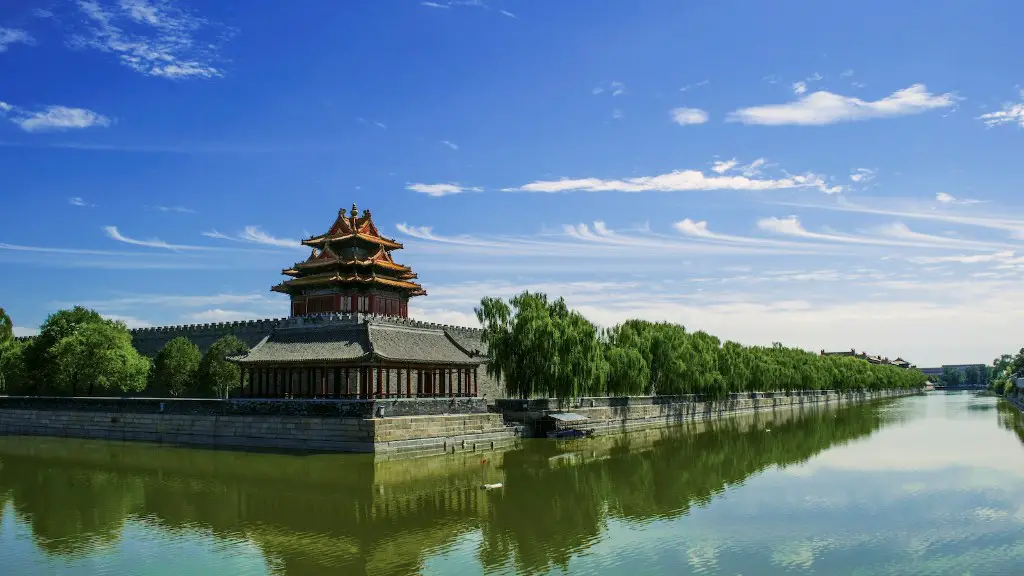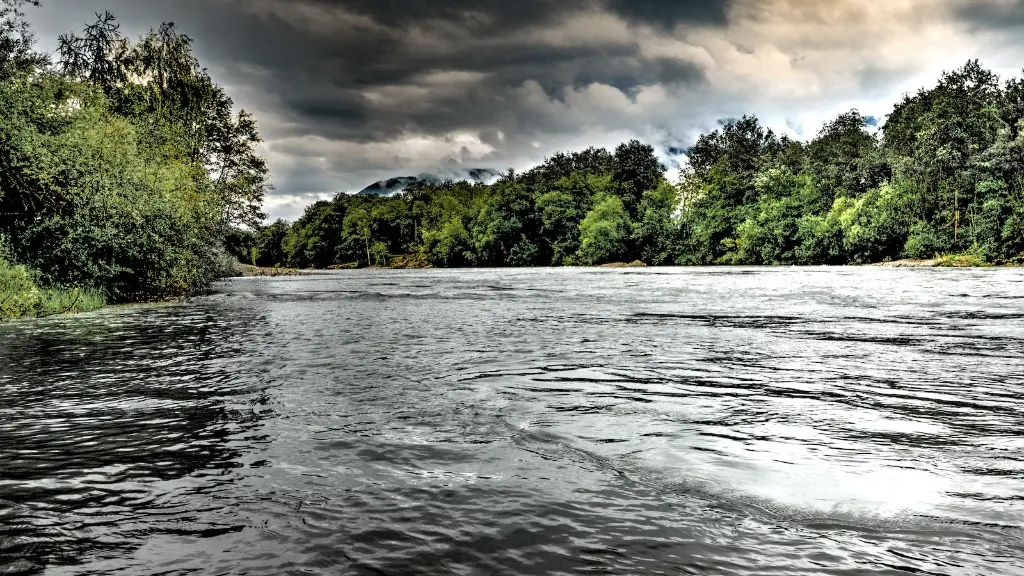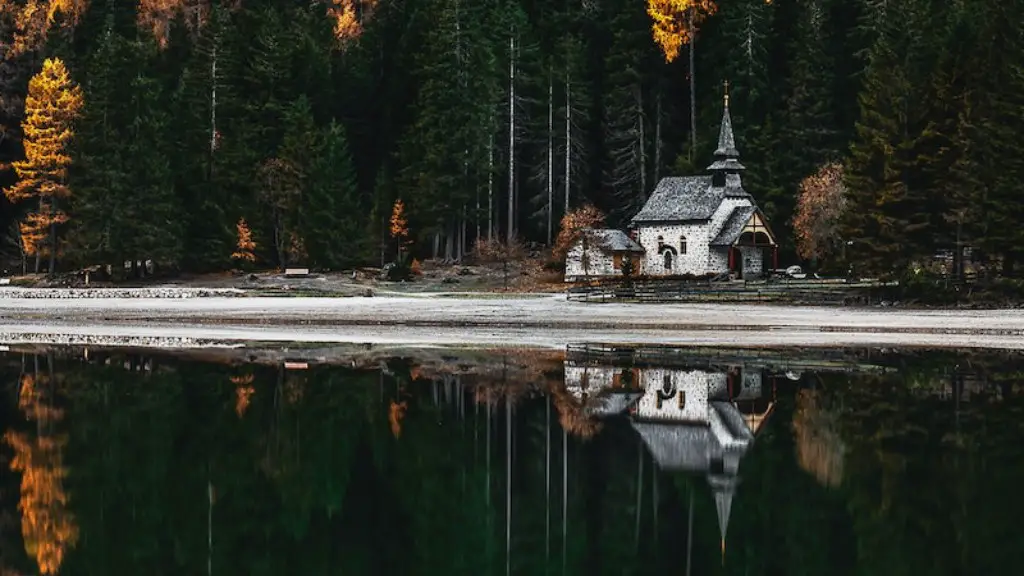The Length of the Yangtze River
The Yangtze River is the longest river in China and one of the longest rivers in the world. Spanning 6,300 kilometers (3,915 miles), this river is one of the most important rivers in the country. Flowing into the Pacific Ocean, it passes through many of the largest cities in China, supplies water to almost one-third of the population, and transports over a third of the country’s goods and materials.
The river has a history of flooding, and its waters can be quite unpredictable. Despite the fact that the river is heavily influenced by human activities such as large-scale engineering projects, the river’s size and ancient nature make it difficult to control. As a result, the local population needs to take precautionary measures to avoid the flooding.
The Yangtze is divided into three distinct parts — the Upper, Middle and Lower respectively — each with its own characteristics. The Upper Yangtze is more mountainous and contains more rapids, while the Middle is more flat and the Lower is the most heavily populated. It is also the only major river in China that flows from west to east.
The river serves as a lifeline for millions of Chinese people, not only providing them with water for drinking, but also for agriculture and industry. The river is also used to generate hydropower, and is heavily relied upon for transportation and tourism. In addition, the richness of the Yangtze’s plant and animal life make it an important spot for ecotourism.
In recent years, the Yangtze has suffered from pollution due to industrial and agricultural runoff. Deforestation has also had an impact, as has climate change. Climate change has caused increased water levels, flooding, droughts, and changes in water temperature, altering the ecology of the region.
The Chinese government has taken steps to protect the Yangtze and its environment by launching a massive campaign to clean up the river. This has included authorities taxing major polluters, setting up water conservancy projects, and launching a nationwide campaign to increase public awareness of the importance of the Yangtze River.
The History of the Yangtze River
The history of the Yangtze River dates back to prehistoric times, when it was home to various nomadic tribes. Over the centuries, this river has been the site of several important events in Chinese history. During the Warring States period, the Yangtze served as a border between China and its southern neighbors, and it was the site of several naval battles between dynasties. It was also an important link between northern and southern regions.
The Yangtze was central to the development of Chinese civilization. During the Han Dynasty, the river became a center of trade and commerce. Throughout the centuries, it has been a place of battles, commerce, and exploration. It has also been a source of inspiration for many of China’s great poets.
Today, the Yangtze is one of the most important rivers in the world, serving as the lifeblood of China. With the construction of the massive Three Gorges Dam, the river has been further transformed into a modern transportation route and energy source. But even with this transformation, the Yangtze remains one of the most important cultural and historical features of the country.
The Wildlife of the Yangtze River
The Yangtze River is home to a wide variety of plant and animal life. It is home to over 300 species of fish, including the Chinese sturgeon, which is a critically endangered species. The Yangtze is also home to several species of mammals, including the Chinese alligator, the Chinese river dolphin, and the finless porpoise.
In addition, the Yangtze River is also home to many endangered plant species. This includes the Chinese water chestnut, the Asian water buffalo, and the Chinese paddlefish. The river is also home to several bird species, including the black-headed gull, the white stork, and the black-tailed godwit.
The Yangtze is one of the most biodiverse rivers in the world. Unfortunately, due to pollution, habitat destruction, and overfishing, the animal population is rapidly decreasing. As a result, conservation efforts are being made in order to protect and preserve this unique and vital ecosystem.
The Economy of the Yangtze River
The Yangtze River is an important economic resource for China. It is a vital transportation route, as ships can navigate up and down the length of the river. This river serves as an important link between the north and south of China, as well as being a crucial transportation route for the country’s goods and materials.
In addition, the Yangtze is a major source of energy for the country. The Three Gorges Dam is one of the largest hydroelectric power plants in the world, generating over 20 percent of China’s power capacity. Additionally, it produces a large amount of back-up electricity.
The Yangtze River is also an important economic resource for the rural communities along it’s banks. Villagers often rely on fishing as a source of income, and the river also serves as an important source of fresh water for irrigation in the dry seasons.
The Yangtze River is also a major tourism attraction. Millions of people travel to the Yangtze to experience its beauty, to explore its culture, and to witness the three gorges of the river. Tourism has become an important income generator for local people.
Conclusion
The Yangtze River is an important part of Chinese culture and history. It is a vital waterway, a source of power, and an important economic resource for the people who live along its banks. Its waters provide sustenance to millions of people, and its beauty attracts tourists from around the world. It is a vital part of the environment that has been damaged from pollution and overfishing, and the Chinese government is taking steps to protect it. The Yangtze River is a vast and powerful river, and has been an important part of the Chinese people for centuries.




